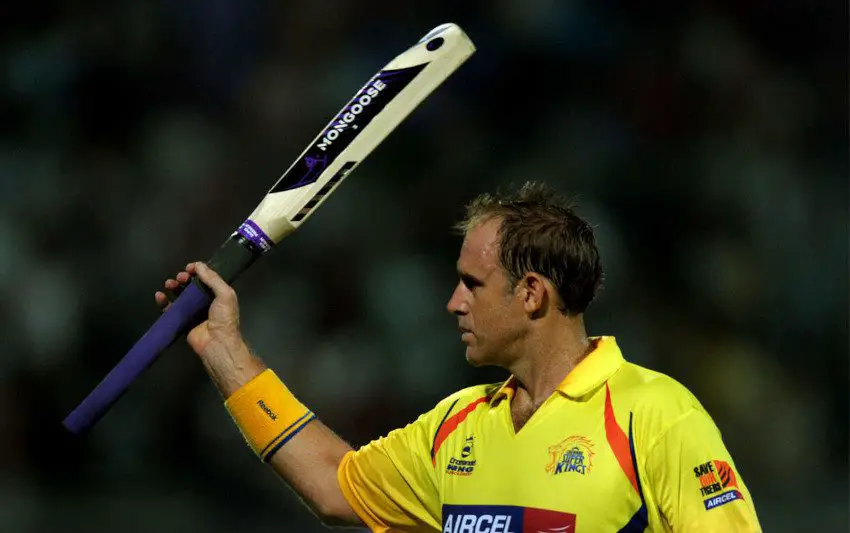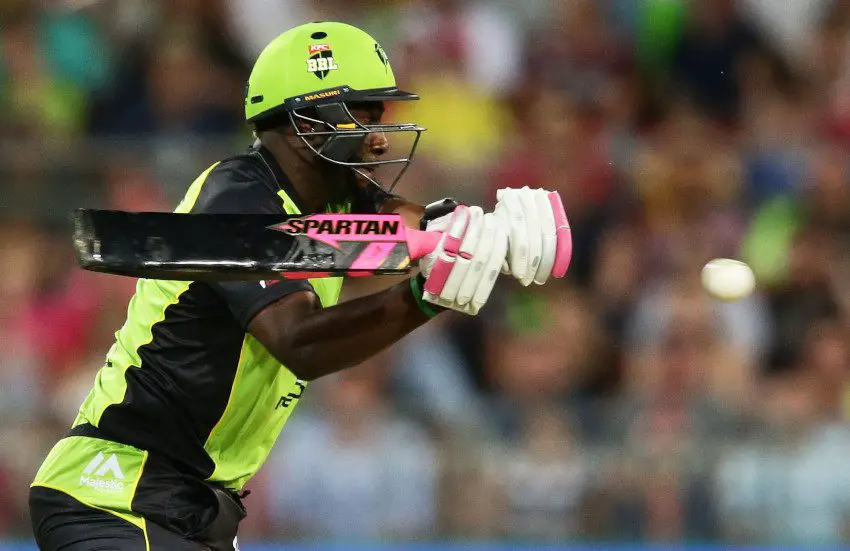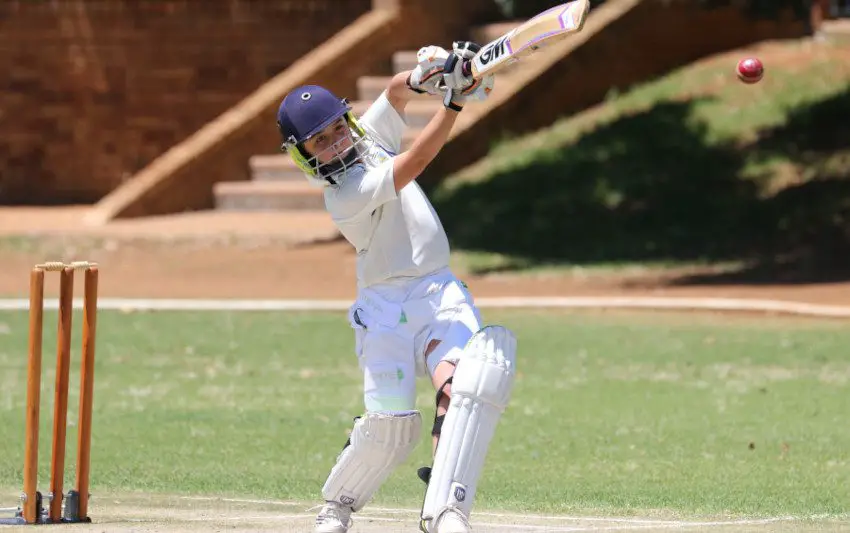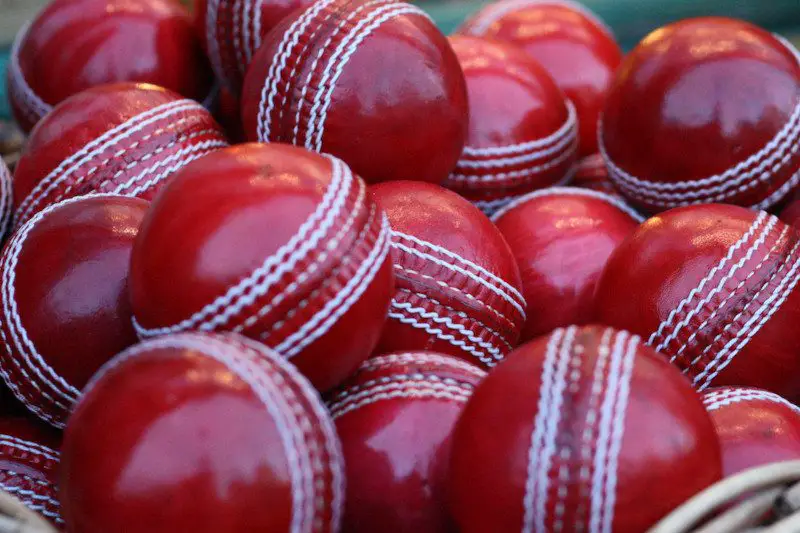Table of Contents
It was probably the ugliest piece of equipment in the history of cricket and thankfully it seems to have gone out of the game but just what is a mongoose bat and what other bats have caused controversy over the years?
5 Worst and Unfair Cricket Bats
1. The Mongoose Bat
The Mongoose bat was first used by Matthew Hayden in the 2010 edition of the Indian Premier League and it was specifically designed for T20 cricket. Other players including Suresh Raina also started to use a Mongoose bat.
It featured a longer handle and a much smaller hitting area and it rather resembled a paddle rather than a conventional cricket bat.

Why Is the Mongoose Bat Unfair?
Those who oppose the Mongoose bat say that it gives an unfair advantage to the attack-minded batsman. It’s design actually increases the sweet spot by some 120%, and even the bat speed. That’s not really within the spirit of cricket.
Is the Mongoose Bat Banned?
While the ICC and the BCCI have reviewed complaints relating to the Mongoose Bat, it isn’t actually outlawed at the time of writing in 2021.
It’s use has, however, virtually died out. While it can help attacking play, the Mongoose bat hasn’t been especially effective for the power players and it is also weak when playing a defensive shot due to its small hitting area.
2. Carbon Graphite Bats
Unlike Andre Russell who we will discuss in the next section, Ricky Ponting hadn’t consulted Cricket Australia before using his Carbon Graphite bat in the 2004/05 season. He smashed a double hundred against Pakistan at the Sydney Cricket Ground but something wasn’t quite right.
The bat itself was made from conventional willow and the only thing that made it different was a thin piece of carbon graphite attached to the back.
Why Is It Unfair?
Other players had used the bat which was produced by the Australian manufacturer Kookaburra. The Marylebone Cricket Club (MCC) claimed that it was unfair because the carbon graphite strip added more power to the bat in a way that wasn’t natural.
Are Carbon Graphite Bats Banned?
The International Cricket Council (ICC) examined the carbon graphite bat in great detail and the complaints about it were upheld. It was found that the carbon graphite strip broke the laws of cricket that relate to bat enhancements and the equipment is now banned as a result.
3. Andre Russell’s Black Bat
The black bat that Andre Russell trialled during the 2016/17 edition of the Big Bash was a conventional one in regards to its size and weight. It was different because the face was entirely black and the aesthetic look was enhanced by a bright pink handle.
Why Is It Unfair?
The problem with the black bat is that it was changing the colour of the ball. Even if it hadn’t affected the white ball’s performance, black marks on the surface would have made it almost impossible for the fielders to see it under lights.
Therefore, the black bat is unfair because it puts the fielding team at a disadvantage.

Are Black Painted Bats Banned?
Black bats such as the one used by Andre Russell are now banned. Initially, Cricket Australia had authorised its use but the issue with the colour of the ball forced them to bring in that ban.
4. Dennis Lillee’s ComBat Aluminium Cricket Bat
The sound of leather on willow is an almost spiritual part of the game of cricket so, the mighty clang that ensued from Dennis Lillee’s aluminium bat was a concern for all that had witnessed it. Known for his fearsome fast bowling, Lillee has previously used this bat in a game against the West Indies but it first raised concerns in the 1979/80 Ashes series.
The aluminium used in its manufacturing process makes it different from a conventional bat. It’s essentially a metal bat and that goes against the laws and everything else associated with cricket.
Why Is It Unfair?
England captain Mike Brearley correctly complained that the aluminium bat would damage the ball. An out of shape ball creates an unfair advantage for the batsman and that’s why the aluminum bat shouldn’t have been used.
Are Aluminium Bats Banned?
While no rules were drawn up to deal with the bat in question, the laws of cricket now state that only wood should be used in the manufacturing process. The aluminum bat is, therefore, illegal under that legislation.
5. The Monster Cricket Bat
The Monster Cricket Bat relates to an incident which occured in a game between Chertsey and Hambledon in 1771. At that time, there was nothing in the laws to restrict the width of a bat and one of the Reigate players strode out to the wicket with a bat that was as wide as the stumps.
‘Shock’ White was the man in question and, while history doesn’t record how he performed, there are clear issues with his equipment.
Why Is It Unfair?
While it’s not impossible for a player using a monster, wide blade bat to be dismissed, the bowling team are clearly at a disadvantage here. In the days of underarm and round arm bowling, it would be possible to just thrust out the gigantic bat and block every ball.
If the batsman takes their legs out of the way, LBW is also out of the equation. It might be difficult to play an attacking shot with such a huge piece of equipment but the batter could potentially just block all day.
Are Wide Blade Bats Banned?
A petition was raised by Hambledon players after the game which effectively led to a change in the laws of cricket. From 1771 onwards, the maximum width of a cricket bat has been set at 4.25 inches.
It is, therefore, impossible to use a monster bat in the present day because the established laws of cricket have made them illegal.


